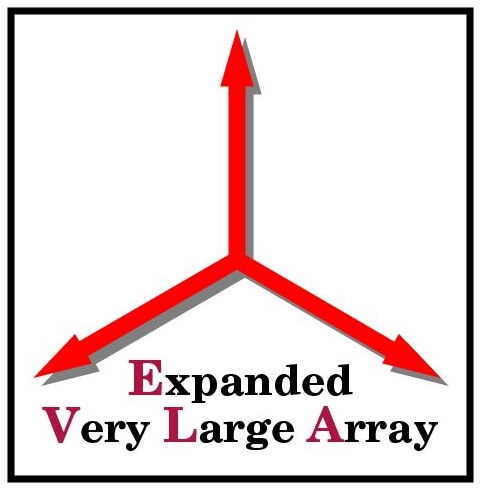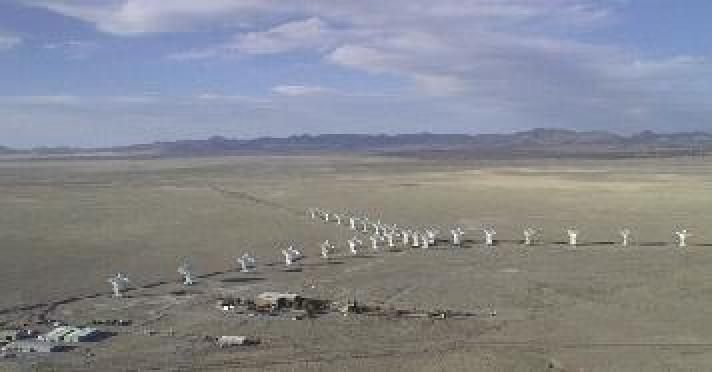|

|
The Expanded Very Large
Array Project:
A Radio Telescope to Resolve Cosmic Evolution
|
 |
|
The
EVLA Project will provide a radio telescope of unprecedented
sensitivity, resolution, and
imaging capability by modernizing and extending the existing Very Large
Array. When completed, the EVLA will provide the following capabilities:
|
|
Sensitivity:
Continuum sensitivity improvement over the VLA by factors of 5 to 20,
to
give point-source sensitivity better than 1 microJy between 2 and 40
GHz.
Frequency
Accessibility: Operation at any
frequency between 1.0 and 50 GHz, with up to 8 GHz bandwidth per
polarization.
Spectral
Capability: Full
polarization (8 GHz bandwidth per polarization), with a minimum of
16,384 channels, frequency resolution to 1 Hz, and 128 independently
tunable sub-bands.
Resolution:
Angular resolution up to 200 / (frequency in GHz) milliarcseconds with
tens of Kelvin brightness temperature
sensitivity at full resolution.
Low-Brightness
Capability: Fast,
high fidelity imaging of extended low-brightness emission with tens of
arcseond resolution and microKelvin brightness sensitivity.
Imaging
Capability: Spatial
dynamic range greater than 106,
frequency dynamic range greater than
105,
image field of view greater than 109
with full spatial frequency samplng.
Operations:
Dynamic scheduling, based on weather, array configuration, and science
requirements. "Default" images automatically produced, with all data
products archived.
|

|
Last
modified by Gene Cole
ecole@nrao.edu
on: 03
June 2009
Thursday, 26-Feb-2009 17:52:06 MST
|


